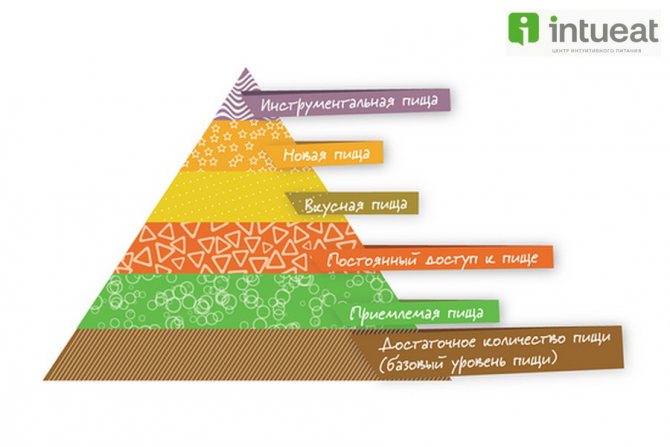Why is fever dangerous in children, and how to deal with it?
advises a medical pediatrician
. Fever is the most common sign of the development of infectious and some other diseases in children. Many things can cause a child to have a fever, from common childhood illnesses such as chicken pox and tonsillitis to reactions to vaccinations. An increase in body temperature is an innate protective mechanism by which the body stimulates the functioning of the protective factors of the immune system. Also, the increased temperature of the internal environment of the body itself can lead to inactivation or death of pathogens of many diseases.
Remember that everyone's body temperature normally fluctuates 1-2 degrees throughout the day and may vary depending on age, activity level and other factors.
So rising temperatures are not a “problem.” This is an indicator that some kind of attack by microbes, viruses or other factors has occurred on the body, and the body reacts to it, gives a “response”. It is much worse when bacteria or viruses attack, but the temperature does not rise (i.e. there is no immune response, or it is insufficient).
Symptoms of overfeeding a child
Children's nutrition
Author: Penelope 12:29, June 27, 2013 26399 0 0
Young and inexperienced parents, left on their own with the child, are often lost and do not know how to care for him, what to do and how to react to crying and screaming. They interpret all signs of a child's dissatisfaction as hunger and feed the baby much more than he needs.
The opinion that it is impossible to overfeed a child is wrong. This primarily applies to artificial feeding, but some children also overeat while breastfeeding, especially if they have a very developed sucking reflex. Such babies try to use their mother’s breast as a pacifier, which leads to overfeeding and is not always convenient for the young mother. Discomfort and problems during breastfeeding will not be beneficial - a woman may stop breastfeeding prematurely due to fatigue.
There are also a number of symptoms that may indirectly indicate that a child is overfeeding. Each of the symptoms individually will most likely be interpreted as a variant of normal development, but if several of them are noted, then it makes sense to reconsider the infant’s feeding system.
Regurgitation
Frequent and copious regurgitation of breast milk or formula after feeding may be a sign that the baby is being overfed. If regurgitation occurs after almost every feeding, then this is probably due to underdevelopment or structural features of the esophagus, swallowing air when feeding from a bottle, or improper latching of the breast. If regurgitation occurs from time to time, then it is more likely that this is a sign of overfeeding the baby.
Increased gas formation
If a child always receives food in response to crying, then the risk of overfeeding him is quite high. So, if a child cries because of abdominal pain, the cause of which is increased gas formation, then receiving additional food only aggravates the situation. Overeating can cause increased gas formation. If a child receives more food than his small stomach can accommodate, then bloating and colic can practically not be avoided.
Too much weight gain
Overfeeding your baby will cause you to gain weight too quickly. Normally, a full-term baby should double the weight it was born with by the time it reaches five months of age and triple it by the first year of life. If a child was born with too low (less than 2500 grams) or too high (more than 4500 grams) weight, then these norms are adjusted. Excess weight in babies makes grandmothers touch and worries specialists - such babies often suffer from delayed physical development, they sit up later, and later begin to crawl and walk.
Fortunately, being overweight in infancy does not always lead to excess weight in the future. Once the baby begins to move actively, he will either stop gaining weight or even lose weight. However, this only applies to those cases when parents instill in their child the norms of proper eating behavior.
Even with free breastfeeding on demand, it is recommended to feed the baby 8 to 12 times a day. When artificial feeding, the only correct decision is to adhere to the feeding standards recommended by the manufacturer of the infant formula. You should also strictly adhere to the proportions of dilution of the mixture. It is not recommended for overweight infants to start complementary feeding with high-calorie cereals; it is better to replace them with vegetables, excluding potatoes. It is also contraindicated to violate the timing of the introduction of complementary foods.
What is a fever?
The normal temperature for babies and children is around 36.4°C, but this may vary slightly from child to child.
- Low-grade fever is an increase in temperature from 36.7 to 38 degrees.
- Fever is a high temperature of 38 C or more.
The following symptoms appear when you have a fever:
- Your baby's forehead, back, or stomach feels hotter than usual.
- The surface of the skin becomes sweaty (moist) and sticky.
- The baby's cheeks and sometimes forehead turn red.
To measure temperature, it is best to use a safe digital thermometer without mercury filling.
How to measure a child's temperature:
- The child's armpit should be clean and dry! If it is wet, the thermometer will show an inflated result!
- Move your child's arm to the side and place the thermometer in the upper armpit.
- Gently place your hand against your body and keep it pressed while taking the temperature.
- Leave the thermometer in place for as long as indicated in the instructions. Some digital thermometers beep when the temperature measurement is complete.
- Take out the thermometer. The display will show the baby's body temperature.
- If your child has just had a bath or has been wrapped tightly in a blanket, wait 10 minutes before taking their temperature.
- Professional infrared thermometers allow you to instantly measure body temperature. If there is a need to measure the temperature as accurately as possible, but there is no professional thermometer at hand, the most accurate results are obtained by measuring the temperature rectally.
What not to do when the temperature rises
- Do not undress your child or cool him or her with blows or rubs; fever is a natural and healthy response to infection. Hypothermia can lead to complications from the infection.
- Do not cover your baby with a warm blanket or wrap him up, as this may cause heat stroke. Just cover your baby with a sheet or light blanket.
- Do not give aspirin to children under 16 years of age. Absolutely never! This may be due to a rare but dangerous disease called Reye's syndrome.
- In children under one year of age, medications available in the form of rectal suppositories are recommended to reduce fever.
- Do not self-medicate. For young children, the dose of drugs and the frequency of their use should be calculated individually; the prescription can only be made by a doctor after diagnosis.
When should you seek emergency medical help?
It is necessary to call a doctor or ambulance in the following cases:
- The child is less than 3 months old and has a temperature of 38°C or higher
- The baby is between 3 and 6 months old and has a temperature of 39°C or higher
- Against the background of fever, rash, vomiting, and diarrhea appeared
- Fever lasts for 5 days or more
- The child refuses the breast, does not eat, behaves unnaturally
- The child has signs of dehydration: dry diapers, sunken eyes, crying without tears.
Vomiting from overeating in a child
In children, vomiting from overeating is quite common. This can happen when force-feeding a baby, when parents try to “shove” as much food into him as possible. A similar situation can arise on holidays, when there are many different delicious dishes on the table. The child tries to try all of them, at least a little. This leads to overeating and the problems associated with it.
Symptoms of overeating in children
Typical symptoms of overeating in children are abdominal pain, diarrhea, nausea and vomiting, lethargy and irritability. It is important to objectively assess the child’s condition. To do this, it is worth comparing what he ate during the day with his usual diet. If the portion of food is greatly exceeded, then the cause of the malaise may be overeating.
A child is vomiting from overeating, what to do?
If a child has symptoms of overeating: vomiting, nausea and others, then you need to try to alleviate his condition. For this:
- you can offer your child a little carbonated mineral water, this will enhance intestinal motility and speed up the evacuation of excess food;
- It is better to remove excess clothes from the baby, which can squeeze his tummy and cause inconvenience, after which the child needs to be put to bed;
- to relieve heaviness in the stomach and speed up the digestion process, it is allowed to take a quarter of a tablet of Festal or Mezim (for children over 3 years old, you can increase the dose to half a tablet);
- You can stroke the baby's tummy with light movements, moving clockwise.
If a child has severe nausea from overeating, you can give him Enterosgel, chamomile decoction or another similar remedy. It will prevent the absorption of food particles into the blood and prevent the development of intoxication. If the baby does not vomit, there is no need to provoke it, since in this case you can injure his pharynx or oral mucosa. Usually after 10-12 hours the child’s condition improves and he develops an appetite. In this case, you can give him a baked apple, a few crackers or herbal tea. For the next meal, the baby is given potato soup or oatmeal. In the future, a normal diet is gradually restored.
Signs of particularly dangerous diseases accompanied by fever
Fever can be a sign of serious illnesses such as meningitis, urinary tract infection and sepsis. It is necessary to urgently call an ambulance or take the child to the hospital emergency room if he has:
- There is tension and stiffness in the neck muscles,
- A rash has appeared that does not go away when you press on it with a finger
- The child is very irritated by light,
- The attack of fever does not go away, the child “shakes” with chills
- The child has unusually cold hands and feet
- Your baby has pale, mottled, blue, or gray skin
- The baby's crying has become weak, moaning, and does not look like usual
- The baby is sleepy, lethargic, and difficult to wake up
- The child has difficulty breathing, the stomach is pulled in under the ribs when breathing
- In a newborn baby, the fontanel on the top of the head has become bulging
What should you do if your child has a seizure? Seizures are a very serious side effect of fever in some children. Febrile seizures occur in 2–4% of all children under 5 years of age. Not all seizures cause sudden muscle twitching. Some seizures look like "fainting." If your child develops a seizure, do the following:
- Place your baby on his side.
- Do not put anything in your child’s mouth, even if “experienced” grandmothers recommend doing so.
- Call an ambulance immediately if the attack lasts more than five minutes.
- If the attack lasts less than five minutes, call your doctor or make an emergency visit to your doctor.
Because your child is malnourished
And the first reason is insufficient food, that is, hunger. Yes, yes, in our age of food abundance, children are systematically undernourished - due to our dietary beliefs, eating habits and painful desire for “healthy” nutrition.
We are also talking about quantity - parents often limit children in the amount of food that they find unsuitable for the child, be it bread, pasta or sausage, hoping that in this way the child will eat more of the right food that is healthy for him. And about quality - children often do not receive enough variety in their diet, because the so-called “healthy” food is rather monotonous and often tasteless.
Elin Sutter, a famous American nutritionist, creator of the shared responsibility approach to child nutrition, recognized by the American Pediatric Association as the “gold standard” of child nutrition, suggests looking at the problem from the point of view of the “hierarchy of nutritional needs.”
Today everyone has heard about Maslow’s value pyramid. We know that in order for a person to want to do charity, help others or save the world, he must first be fed and provided with a roof over his head. So, it’s the same with food.
In order for your child to want to try new foods or eat foods for health reasons (yes, this happens!), you first need to meet a basic level of nutritional needs: enough food. As long as we cut down on a child’s food intake, he will be afraid that he will not have enough, that he will remain hungry.
Hierarchy of nutritional values according to Elin Sutter

✤ Sufficient amount of food (basic level of food) - cook enough to have leftovers. If there is food left after everyone has eaten, it means everyone has eaten enough and enough food has been prepared. If a child has a fear that some food (candy, sweets) will not be enough, he will overeat it. If a person is on a diet, he will overeat. At this level, a person is ready to eat anything to feel full, but preference will be given to sweet and fatty foods as guaranteed quick sources of energy.
✤ Acceptable food is next level. If there is enough food, then a person begins to choose what to eat more carefully, and preferences appear.
✤ Constant access to food - at this stage planning begins (what to cook for tomorrow, what food to store and buy more, what we will eat for the holidays, etc.).
✤ Delicious food is a stage in the formation of individual food preferences (I like this, but I don’t like that).
✤ New food - only after passing all the previous stages does the ability to try new food appear.
✤ Instrumental food - the highest level - food that I eat to improve my functioning.
A child overeats cookies and loads up on candy because he doesn’t have enough regular, “unsweetened” food - is this possible? Yes, it's possible.
The solution to the problem is diversity.
The child should receive a sufficient amount of varied food every 2.5-3 hours. It is unacceptable to limit a child to one or another product or dish; you need to cook in such a way that the food remains - this is the only guarantee that everyone has eaten enough. You can add as many additives as you want.
As part of our Children's Meal Plan , we teach parents that the food pyramid for children is significantly different from the food pyramid for adults - and all its elements should be present on the children's table at every meal. The child chooses from this what he can and wants to eat. With this style of eating, if the reason for overeating sweets was precisely hunger, the problem is solved quickly.











